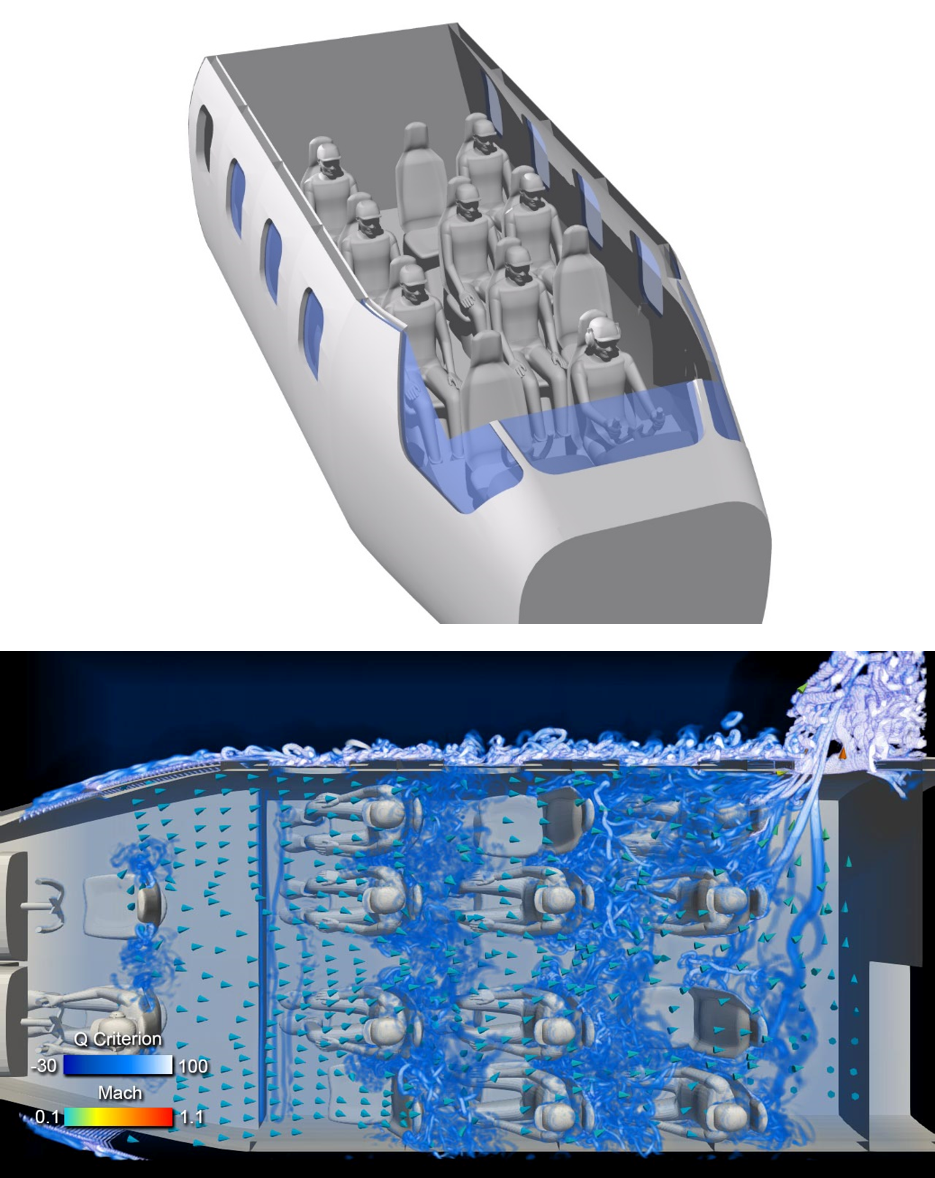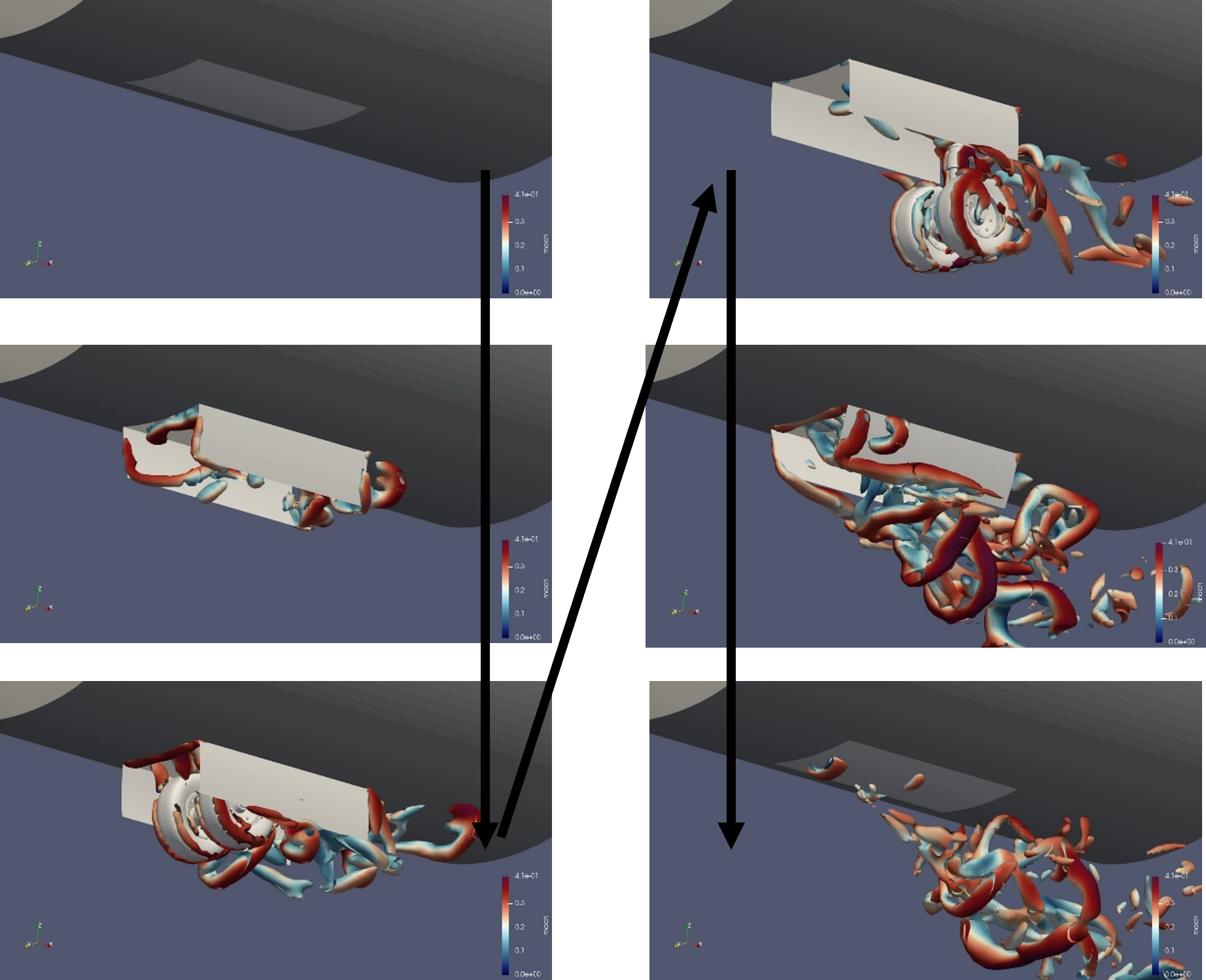MEXT Program for Promoting Researches on the Supercomputer Fugaku, Leading research on innovative aircraft design technologies to replace flight test
JAXA Supercomputer System Annual Report February 2024-January 2025
Report Number: R24ECMP30
Subject Category: Competitive Funding
- Responsible Representative: Yuko Inatomi, Institute of Space and Astronautical Science, Department of Interdisciplinary Space Science
- Contact Information: Ryoji Takaki(takaki.ryoji@jaxa.jp)
- Members: Kazuhiro Imai, Yosuke Matsumura, Ryoji Takaki
Abstract
Realization of high-precision aerodynamic prediction by high-fedelity LES analysis around whole aircraft configulation for actual flight conditions.
Reference URL
Please refer to http://www.klab.mech.tohoku.ac.jp/fugaku/index.html .
Reasons and benefits of using JAXA Supercomputer System
It is possible to develop programs efficiently because JSS has the same architecture as the final target "Supercomputer Fugaku",
Achievements of the Year
The Cartesian grid method, which is currently being used, allows fully automatic creation of computational grids, making it easier to handle moving and deforming objects than conventional methods. Since the effectiveness of the method was verified with a two-dimensional analysis program, we extended the method to three dimensions. This made it possible to handle moving and deforming objects in three dimensions, and thus enabled more practical calculations. Figures 1 and 2 show examples of the analysis. Figure 1 shows the flow in the passenger compartment inside an aircraft fuselage. It was confirmed that even for very complex geometries, it is possible to create a fully automated computational grid and perform a flow field analysis. Figure 2 is an example of analysis of the loading and unloading of an aircraft landing gear. Although the calculations are relatively coarse, it was confirmed that analysis of a moving object with complex geometry can be performed.

Fig.1: Analysis example of complex shape (inside of aircraft fuselage, isosurface: Q-value, triangular pyramid: velocity vector, color: Mach number)
Publications
- Oral Presentations
Ryoji Takaki, "Examining Next Generation Applications for Post Fugaku", The 8th HPC Manufacturing Integration Workshop, 12.3.2024.
Ryoji Takaki, "On the Creation of Geometry Shape Information in the Cartesian Grid Method", 56th Fluid Dynamics Conference/42nd Aerospace Numerical Simulation Technology Symposium, 3A05, July 5, 2024.
Usage of JSS
Computational Information
- Process Parallelization Methods: MPI
- Thread Parallelization Methods: OpenMP
- Number of Processes: 1 - 200
- Elapsed Time per Case: 500 Hour(s)
JSS3 Resources Used
Fraction of Usage in Total Resources*1(%): 0.22
Details
Please refer to System Configuration of JSS3 for the system configuration and major specifications of JSS3.
| System Name | CPU Resources Used(Core x Hours) | Fraction of Usage*2(%) |
|---|---|---|
| TOKI-SORA | 5775445.88 | 0.26 |
| TOKI-ST | 65577.83 | 0.07 |
| TOKI-GP | 75.89 | 0.00 |
| TOKI-XM | 0.00 | 0.00 |
| TOKI-LM | 1009.09 | 0.07 |
| TOKI-TST | 0.00 | 0.00 |
| TOKI-TGP | 0.00 | 0.00 |
| TOKI-TLM | 0.00 | 0.00 |
| File System Name | Storage Assigned(GiB) | Fraction of Usage*2(%) |
|---|---|---|
| /home | 495.57 | 0.33 |
| /data and /data2 | 21808.33 | 0.10 |
| /ssd | 1584.67 | 0.08 |
| Archiver Name | Storage Used(TiB) | Fraction of Usage*2(%) |
|---|---|---|
| J-SPACE | 2.59 | 0.01 |
*1: Fraction of Usage in Total Resources: Weighted average of three resource types (Computing, File System, and Archiver).
*2: Fraction of Usage:Percentage of usage relative to each resource used in one year.
ISV Software Licenses Used
| ISV Software Licenses Used(Hours) | Fraction of Usage*2(%) | |
|---|---|---|
| ISV Software Licenses(Total) | 3.26 | 0.00 |
*2: Fraction of Usage:Percentage of usage relative to each resource used in one year.
JAXA Supercomputer System Annual Report February 2024-January 2025



